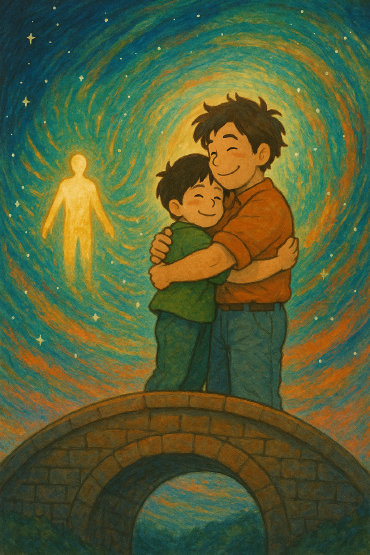The Bridge Connecting Lost Time - A Miracle Created by Technology and Love
The Story of the Missing Child
In 1988, a third-grade elementary school child quietly disappeared from a small house in Gangdong-gu, Seoul. At that time, the family was left in a chaotic environment, losing their child, and many may have forgotten this fact. Due to societal indifference and a lack of information systems, the child remained known only as a 'missing child.' As time passed, the family continued to stand in the place of their loss, and the enduring wait and guilt never faded from their hearts. Though it seemed forgotten, the child was always a part of their memories.
Discovery of Miracles
And now, after 36 years, a miracle has happened. The advancement of science has enabled precise cross-referencing of genetic analysis technology and facility records. The lost names and faces have been brought back to life through the power of science, and the child has ultimately returned to the embrace of family. Without such technology and effort, a precious existence could have been forgotten forever. In this process, I once again realized the immense power of data and science.
Reunion of Emotions
The moment of reunion was truly special. My mother's trembling fingertips, the tears flowing between my father's tightly pressed lips, and the embrace of my siblings brought us back together as one family, transcending all the years. That moment was not just a simple meeting it can be described as a scene of restoration created by the intertwining of time, technology, and human faith. It was the moment when the price for all those years of waiting was finally paid.
Responsibilities of Technology
This incident poses important questions for all of us. It prompts reflection on what technology should exist for and what responsibilities records must bear. Data is cold, but within it lies the warm stories of humanity. The records and systems we build can become a lifeline of hope that can restore someone's life. Ultimately, we realize that true restoration and recovery can only occur when technology and human compassion meet.
The direction of our society
This record of miracles clearly indicates the direction we need to move forward. There is a pressing need for a centralized recording system to quickly identify and respond to missing persons information, as well as a critical requirement for the scientific and technological foundation to safely analyze and preserve DNA and biometric information. Furthermore, a 'will to search' is essential to make these things happen, and we must not forget public solidarity. This plays an important role in enhancing societal cohesion.
Balance between Technology and Ethics
Technology is just a tool. Depending on how that tool is used, it can become a miracle or a dangerous weapon. As artificial intelligence, big data, and blockchain technology advance, we must take on greater responsibility. There is a need for wisdom in ensuring that the technology used to identify missing persons does not infringe on their privacy and dignity. We must not forget that human rights sensitivity and ethics should be at the center of technological advancement.
The Wounds of the Community
We should no longer view the issue of missing persons simply as a case. It is a wound that the community carries, and I believe it serves as a mirror of how much we care for one another. I hope that the culture of remembering the missing and sharing information spreads. As these efforts accumulate, they can ultimately contribute to ensuring that no one is forgotten in this land alone. The connections within our community become more essential than ever.
Message of Hope
The most important thing is that this incident has proven that 'hope' is not just a sentimental word, but a reality. The miracle forged through long waits and constant wishes becomes a message delivered to all families. Just like the saying 'hope grows even in despair', we must never lose sight of possibility. True hope is when someone remembers you, and we must build that memory together.
Preparing the Next Generation
We must now ask the question of how we will prepare the next generation. We need to consider what sensibilities we should instill in schools and society, and how we will carry on the value of records and memories. Small actions can come together to protect a life and bring smiles to a family. Ultimately, there are many things that need to be done for our society to become warmer.
Miracles are close by
Miracles are not far away. In moments when attention, memory, skill, and solidarity come together, we can create miracles at any time. Even in the lost time, we must continue to document, wait, and connect with each other so that the spark of love that has not extinguished can reignite. On the day another missing person returns, we must be ready to say this: 'I remembered you. You.'

Post a Comment